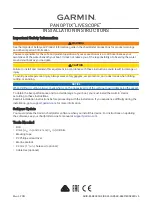
4 - 1
INP-TN4PHAV-E
4.1
Before doing the wiring
To carry out wiring, remove the unit's rear cover (Notes).
(1) For the power cable, use a 600V vinyl-insulated cable (JIS C 3307) or a cable with equal or supe-
rior performance to this.
(2) Use compensating leads for thermocouple inputs.
(3) To avoid the effects of induction noise, keep input signal leads as far away as possible (at least
30cm) from power supply lines and lines carrying heavy current. Also, wherever possible use a
shieled cable and earth one point of the shield.
(4) For wiring the terminals, use a maximum of 2 crimp style terminals.
Notes
(1) To remove the rear cover, put a finger in a cable
through-hole in the cover, gently raise the cover
and then pull outwards.
(2) After wiring up the input terminals, always re-
place the rear cover in its original position so as
to ensure proper compensation of reference con-
tacts for thermocouple inputs.
(3) We recommend the use of insulation-sleeve
solderless terminals (using M4 thread) for con-
necting wires to terminals.
4.2
Connection of wires to terminals
(1) Input terminals
➪
Connect signal leads for each channel.
(2) Alarm, external control unit (option)
➪
Connect the alarm signal outputs and ex-
ternal control signal inputs (for alarms 1
to 6, external controls 1 to 3).
(3) Alarm unit (option)
➪
Connect the alarm signal outputs (for
alarms 7 to 12).
(4) Power supply terminal
➪
Connect the power cables to AC/AC ter-
minals. Connect to a noise-free, stabi-
lized power supply.
This is an 100 to 240V AC free power supply.
(5) Ground terminal
➪
Effect type 3, Grounding (not more than 100
Ω
) of the G terminal.
(6) Transmission terminal (option)
➪
Connect the transmission signals.
4. WIRING
Alarm unit are of overvoltage category I.
Other signal (input, communication interface) should be SELV (safety separated from
hazardous voltage).
CAUTION
(6)
(3)
(2)
(4) (5)
(1)
(Inputs 7 to 12)
(1)
(Inputs 1 to 6)














































